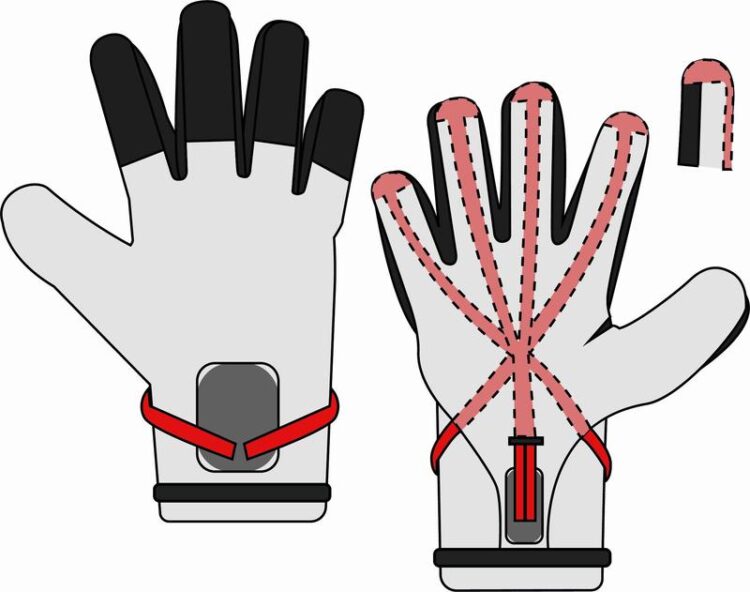Goalkeeper gloves with integrated textile finger overstretch protection

Structure of the new goalkeeper glove
(c) T1TAN
Withstanding the force of 120 kilometers/hour…
Often a fingertip length decides between victory and defeat. When we currently watch a goalkeeper elegantly deflect the ball over the crossbar during the European Championship, we can hardly imagine the forces that act on the fingertips and the danger of injuring oneself in the process. The German Institutes of Textile and Fiber Research Denkendorf (DITF) and their project partner T1TAN GmbH are developing effective finger overstretch protection for soccer goalkeeper gloves.
Effective finger overstretch protection for soccer goalkeeper gloves.
“The research task is very demanding,” explains Hans-Helge Böttcher, a scientist at the Technology Center Knitting Technique at the DITF in Denkendorf. “The textile material not only has to protect the fingers from extreme stress, it also has to be flexible and not restrict sensory perception.” That, he said, is the reason why no effective protection has been available on the market to date.

(c) DITF
The glove developed at the DITF is designed to prevent 90 percent of injuries caused by overstretching. To achieve this, a mechanical concept was developed that absorbs the force in the fingertips and optimally transfers it to the forearm via the wrist cuff – and does so without the glove deforming. This is ensured by textile structures that are sewn on from the finger end joint of the outer hand to the finger end joint of the inner hand and are thus firmly anchored in the glove. The advantage is that the protective device can not only be individually adjusted to the length of the athlete’s hand, but the appropriate pretension can even be set for each individual finger. This replaces the plastic splints previously attached to the outer hand. These so-called finger frames have the disadvantage that they easily bend beyond their stretch limit.
To test the effect, a “glove test rig” was set up at the DITF. It consists of a ball cannon and a specially designed hand dummy for the goalkeeper’s glove. The ball cannon fires at speeds of 20-120 kilometers/hour and from different ball ejection angles. A pressure cell is installed behind the glove to determine the “residual impact force” on the hand. This is so low in the newly developed goalkeeper glove that the goalkeeper is effectively protected from overstretching his fingers.
The research project will be completed in September 2021. “It is quite possible that the new technology will already be standard at the World Cup in Qatar,” says Oswald Rieder, Head of the Technology Center Knitting Technique.
The research project is funded under the Central Innovation Program for SMEs (ZIM). The project partner is T1TAN GmbH from Herbolzheim, www.t1tan.eu.
Wissenschaftliche Ansprechpartner:
Oswald Rieder
Head of Technology Center Knitting Technique
T +49 (0)711 93 40-269
E oswald.rieder@ditf.de
Media Contact
All latest news from the category: Innovative Products
Newest articles

Largest magnetic anisotropy of a molecule measured at BESSY II
At the Berlin synchrotron radiation source BESSY II, the largest magnetic anisotropy of a single molecule ever measured experimentally has been determined. The larger this anisotropy is, the better a…

Breaking boundaries: Researchers isolate quantum coherence in classical light systems
LSU quantum researchers uncover hidden quantum behaviors within classical light, which could make quantum technologies robust. Understanding the boundary between classical and quantum physics has long been a central question…

MRI-first strategy for prostate cancer detection proves to be safe
Active monitoring is a sufficiently safe option when prostate MRI findings are negative. There are several strategies for the early detection of prostate cancer. The first step is often a…



